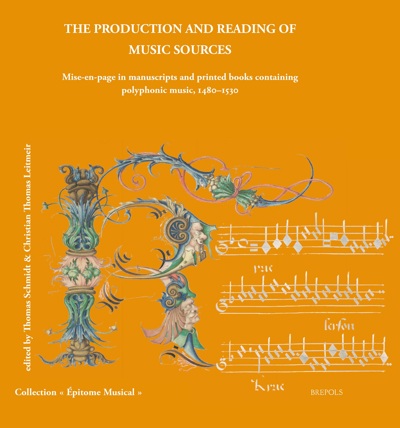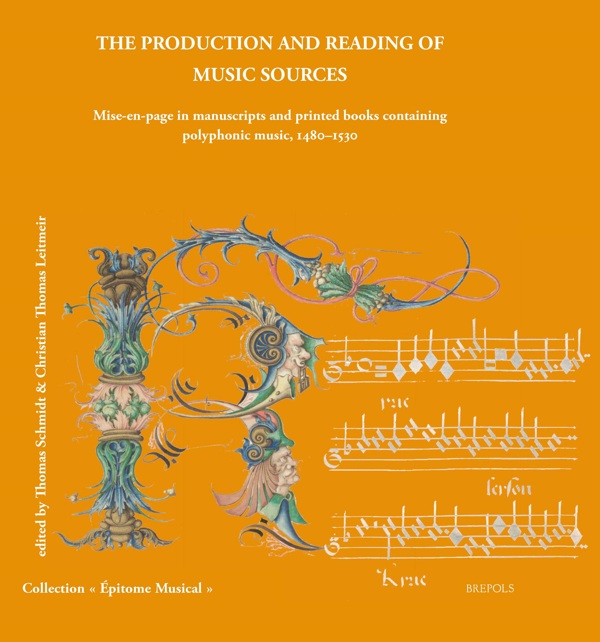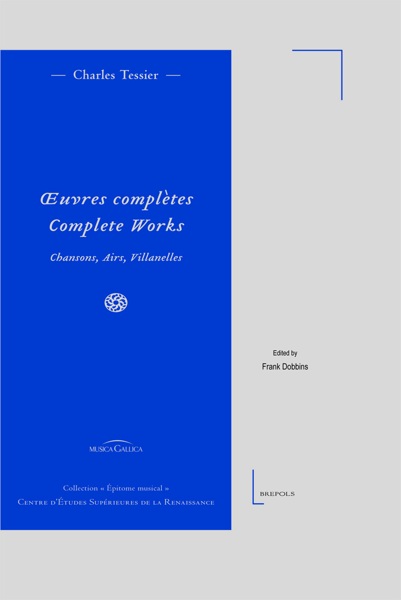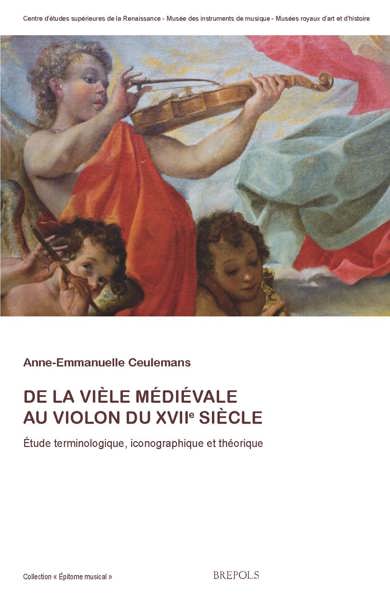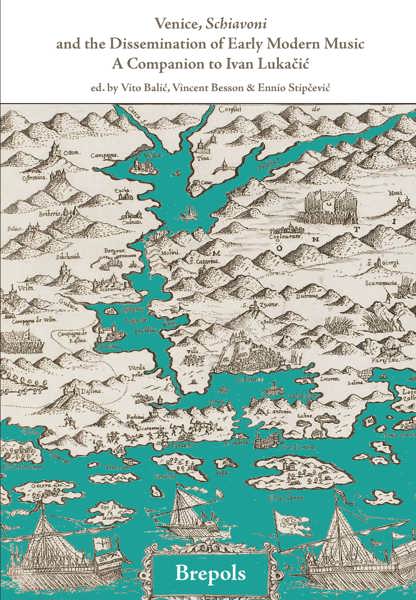
The Production and Reading of Music Sources
Mise-en-page in manuscripts and printed books containing polyphonic music, 1480–1530
Thomas Schmidt, Christian Thomas Leitmeir (eds)
- Pages: xl + 541 p.
- Size:230 x 280 mm
- Illustrations:339 b/w, 58 col.
- Language(s):English
- Publication Year:2018
- € 85,00 EXCL. VAT RETAIL PRICE
- ISBN: 978-2-503-57961-0
- Paperback
- Available
The first comprehensive study of how polyphonic music of the Renaissance was laid out on the written or printed page, and how this influenced the ways it was read or sung
“The quality of the authors' scholarship along with the high production values invested in the visual components of the book make it a worthwhile reference source. In many ways, it resembles the best efforts of past music manuscript studies while also provoking its reader to consider a source's layout as a key to its meaning. (...) the book provides reassurance that art historians and musicologists can work together to their mutual benefit.” (Matthew Steel, in The Medieval Review, 03.12.2019)
« Il s’agit en effet d’un travail réellement interdisciplinaire, à la croisée des chemins entre l’histoire du livre et du livre de musique, entre l’histoire culturelle et celle des relations entre les divers acteurs du milieu musical du début de la Renaissance. » (Pascale Duhamel, dans Renaissance et Réforme, 43/1, 2020, p. 279)
“The fruits of this ambitious, systematic, and thorough project will enable heightened awareness of messages conveyed by music’s material history.” (Jennifer Thomas, in Notes, 76/4, 2020, p. 615)
Renaissance sources of polyphonic music not only convey a rich repertoire of some of the most impressive music ever written. From the point of view of their layout or mise-en-page, they are also amongst the most complex books of their time. They typically combine verbal text, musical notation and other graphic devices, and the different voice parts are arranged to be read separately by the performers, yet to be performed simultaneously. As an integral part of the production and use of these books, the mise-en-page thus provides crucial information for the understanding of the repertoire that is transmitted through them.
The present volume combines a number of studies resulting from a research project funded by the UK Arts and Humanities Research Council (AHRC) into this question, combining the examination of a number of overarching themes (e.g. luxury codices, printed polyphony, music theory books, illumination) with case studies of individual sources.
1 Thomas Schmidt
Making Polyphonic Books in the Late Fifteenth and Early Sixteenth Centuries
2 Christian Thomas Leitmeir
Made to Measure: Compositional Challenges behind the Penitential Psalm Codices from the Munich Court
3 Sanna Raninen
The Early History of Printed Folio Choirbooks: Production and Layout
4 Stanley Boorman
The Representation of Notation in Early Printed Treatises on Music
5 Mara Hofmann
The Decoration of Music Manuscripts from the Burgundian-Habsburg Court
6 Mara Hofmann
Brussels, Koninklijke Bibliotheek/Bibliothèque royale de Belgique, MS 9126
7 Mara Hofmann
The Chansonnier of Margaret of Austria (Brussels, Koninklijke Bibliotheek/Bibliothèque royale de Belgique, MS 228)
8 Mara Hofmann
Mechelen, Archief en Stadsbibliotheek, s.s.
9 Joanna Fronska
London, British Library, Royal MS 20 A. xvi
10 Ian Rumbold
Munich, Bayerische Staatsbibliothek, Mus. Ms. 3154 (‘Leopold Codex’)
11 Ian Rumbold
Hradec Králové, Muzeum Východních Čech, Knihovna, MS II A 7 (‘Speciálník Codex’)
12 Ian Rumbold
The Polyphonic Manuscripts of the Duomo in Modena
Bibliography
